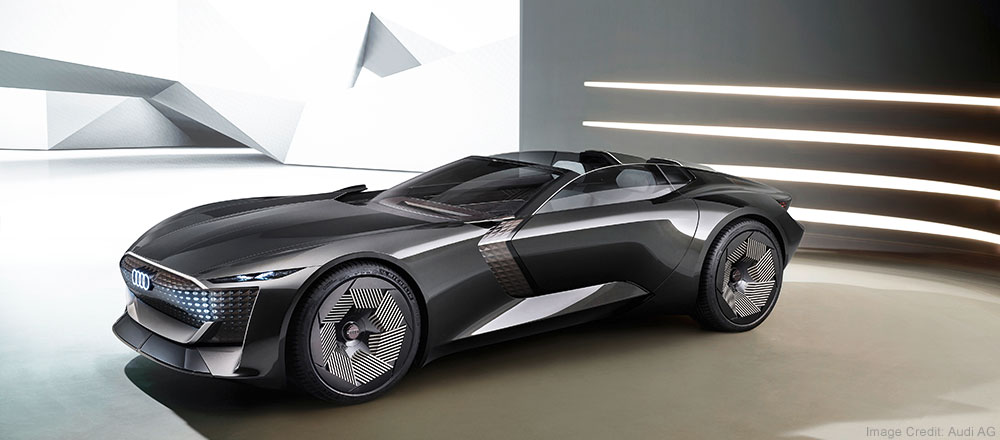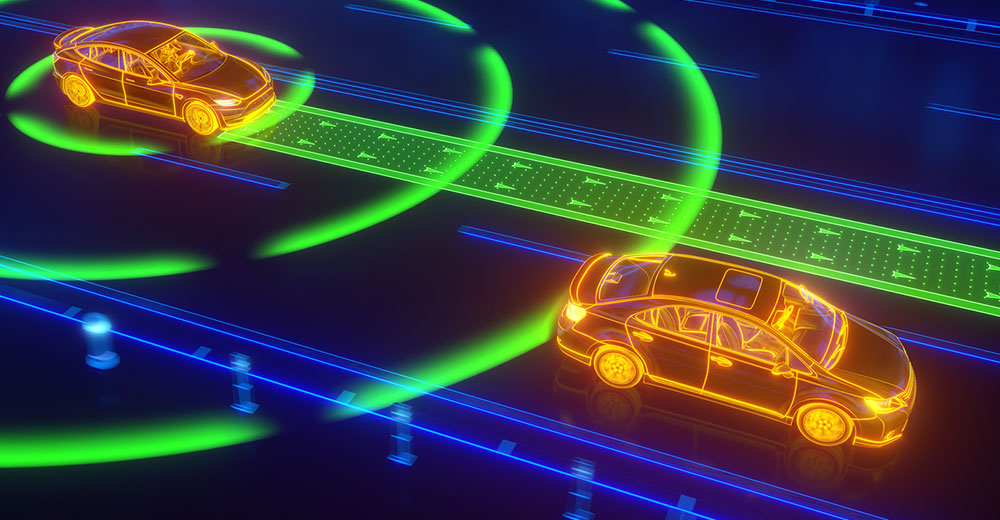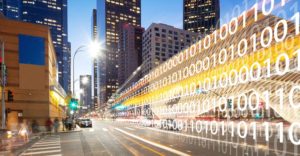Autonomous driving now forms the core of most of the efforts to create autonomous robotics. However, up until now there’s been one rarely talked about but critical problem that remains unsolved: What do we do with those things that will share the roads with these self-driving cars and trucks that are not autonomous?
The number of production vehicles on the road that are Level 4 or 5 autonomous is precisely zero. This means we are still working off the old model based on how long it took to replace horses with cars that are way out of date. In addition, a significant amount of the life-saving benefit of autonomous cars is their ability to talk to each other and provide substantial warning for safety issues beyond the reach of the car’s sensors.
To address this omission, Qualcomm and its partners like Spoke are proposing a standard called VRU2X which initially will target bicycles, motorcycles, and delivery vehicles; but I expect will cover far more once we begin to ramp up Level 4 and 5 autonomous cars.
Let’s talk about this next phase of making autonomous vehicles massively safer. We’ll close with my product of the week, an autonomous electric prototype that re-establishes Audi as a segment leader.
Killing the Trolly Problem
The trolly problem was created as a way to discuss ethics and psychology. I don’t think it should have ever been applied to autonomous vehicles.
A version that’s been spreading is an autonomous car is heading for a school bus with a bunch of kids getting on or off the bus. If the car hits the kids, the driver and car survive; but if it hits the bus, the car is wrecked and the driver dies. What does the AI do?
According to the Association for Safe International Road Travel, 1.35 million people die in car accidents every year. How many die due to this kind of choice? The number must be very small because I’ve never found a single one.
Also, if this happened when you were driving, by the time you made a decision you’d have already hit one of the two. Finally, if you saw the kids and bus in enough time to stop, you wouldn’t suggest the cause of the accident — if it had happened — was because you were driving at an unsafe speed; and autonomous cars will be prevented from driving at unsafe speeds.
But this argument, which has somewhat delayed the deployment of autonomous driving and saving 1.35 million lives per year, is being partially held up for an unlikely hypothetical which, at most, might injure less than 100 kids one time.
Consider if that bus was instrumented so the autonomous car knew about and could avoid the accident, this unlikely event drifts even farther into the range of the impossible. If VRU2X were used on school buses, they would be part of the network and autonomous vehicles would become even safer.
VRU2X
C-V2X, which allows cars to talk to each other, is too large and requires too much power for small or human-powered vehicles like bicycles. VRU2X, which is derived from C-V2X, is about the size of an iPhone. It will initially target bicycles and motorcycles because they are hard to see and share the roads with cars.
If put into smartphones, I think the technology would also better protect pedestrians — particularly children who often are distracted and walk into traffic between vehicles or between buildings where the car’s sensors may not be able to see them approach.
Whatever is carrying this technology becomes part of the network and would even backstop things like bright traffic lights. If those lights failed or weren’t seen by a pedestrian, bike rider or motorcycler, the autonomous car would still be able to avoid hitting them much more effectively.
I like to watch YouTube videos of accidents as a reminder of what not to do when I’m driving. Right now, a driver generally can’t see a car that is going to run a stoplight in time to avoid the accident. But AI tracking an approaching vehicle with this technology would anticipate the risk and slow; thus preventing accidents that aren’t your fault but could result in your injury or death. If you get killed, it doesn’t matter to you anymore who’s at fault.
To maximize the potential safety of this new autonomous capability, I expect that we will need to have anything likely to share the road with a car instrumented. This is because we still have to deal with physics, and a car at speed can only do so many things regardless of whether it’s driven by a computer or human.
Suppose a child steps in front of a car doing 40 mph. In that case, the car physically won’t stop in time to prevent the kid’s death. This is a physics problem of speed, mass, and the swept area of the brakes, and while the computer will react faster, it can’t overcome physical limitations.
The same thing with ice: if the car doesn’t sense the ice in advance, it won’t be successful avoiding trouble any better than the best race car driver in the world. But if any other connected vehicle (car, bike, scooter, etc.) sees that ice first and reports it, then any connected driver, computer, or otherwise is far more able to avoid getting into the problem in the first place.
Ice and sand are hazardous to two-wheeled vehicles which can fall on their sides and become ballistic. So not only does this technology potentially protect these vulnerable vehicles from collisions, but also from surface-caused accidents in a type of digital herd protection. A car seeing the ice first could alert a bike or motorcycle of the danger allowing that following vehicle to avoid the danger.
Wrapping Up: We Should Deploy VRU2X Before Autonomous Cars
I avoid several accidents a year due to the sensors in our cars that alert if danger is approaching that I might not see. Were this technology deployed and my car able to see it, I’d be made more aware of problems my current sensors can’t see either. Since my reaction times aren’t as good as when I was young, and have never been as fast as a computer, this could save more lives sooner were it deployed now.
Suppose you somehow added this to every smartphone and provided an aftermarket service or in-car option that alerted when a person was likely to be hurt. In that case, we’d likely avoid many of the bicycle, pedestrian, and even avoidable motorcycle accidents we have even without autonomous cars.
It could be made part of the car camera systems we are using to capture accidents — currently to prove who’s at fault — and would make us better able to avoid those accidents in the first place. Better than avoiding fault is avoiding the accident altogether.
I had to stop riding motorcycles because accidents at my age are likely to be far more life-threatening than when I was younger. VRU2X should allow me and others in my age group to safely ride again.
Coincidently, as I was writing this column, a guy riding a bicycle in my age group was killed locally by a 19-year-old man driving under the influence. Had both vehicles being able to communicate, I believe he’d still be alive today.
VRU2X, due in 2022, will make it far safer for all of us to ride bikes, with or without motors, on the same road with cars; and should be used more broadly to connect anything, including horses, that share the road with the coming wave of autonomous and modern human-driven cars.

The Audi Skysphere Concept
Audi was one of the initial leaders in autonomous driving technology. The first autonomous car prototype I saw was at an event at the Stanford University lab using a modified first-generation Audi TT in the early 2000s. I’ve owned 4 Audis and enjoyed all of them; they just haven’t made a car that spoke to me (outside of the R8, which I remain tempted by) in some time.
Last week Audi unveiled a prototype car called the Skysphere that I probably can’t afford but suddenly have lust in my heart for.

Audi Skysphere Concept
Not only is this thing awesome looking, electric, and incredibly fast, it morphs by changing its length from being a grand touring (GT) car able to eat up distances comfortably to a sports car that should corner like a dream.
A few years back, I was driving a Jaguar XK8, which has a long wheelbase, and did well driving with Porches and Alphas until we hit tight corners; then I couldn’t keep up. On the other hand, my car was a ton more comfortable than those other cars.
This Audi promises to provide the comfort you’d want to get to a track and the performance you’d need to be competitive on a tight road course, all in the same car. Though, I have to admit, given what this thing is likely to cost, tracking it may be a tad challenging to justify unless you are a lot richer than I am.
The Skysphere is designed to be a Level 4 autonomous vehicle which means it can handle almost any road but won’t work off-road autonomously. Given how low this thing sits, you’d have to be nuts to go off-road with it in the first place.
What is cool is that when the car is in GT mode, the steering wheel and pedals vanish, and the car does the driving; when you go into sports car mode, the dashboard splits, the steering wheel emerges, and the pedals drop to give you control. (See the following trailer for a glimpse of all that.) Though I expect you’ll be in a mode called “Guardian Angel,” where the car will still have partial control by default, so you are less likely to have an accident.
The estimated range is just over the minimum needed to be viable at 310 miles; horsepower is a respectable 624, and torque (which generates from zero) 553 lbs. Sadly it isn’t Tesla fast with a 0-60 of 4 seconds, but that’s as quick as my old Mercedes AMG track car.
You can check out this car if you are attending Monterey’s Car Week festivities. While I doubt it will ever be built; because I want to drive it, the Audi Skysphere is my product of the week. (My wife took one look at this and indicated she wants it, so…)



























































